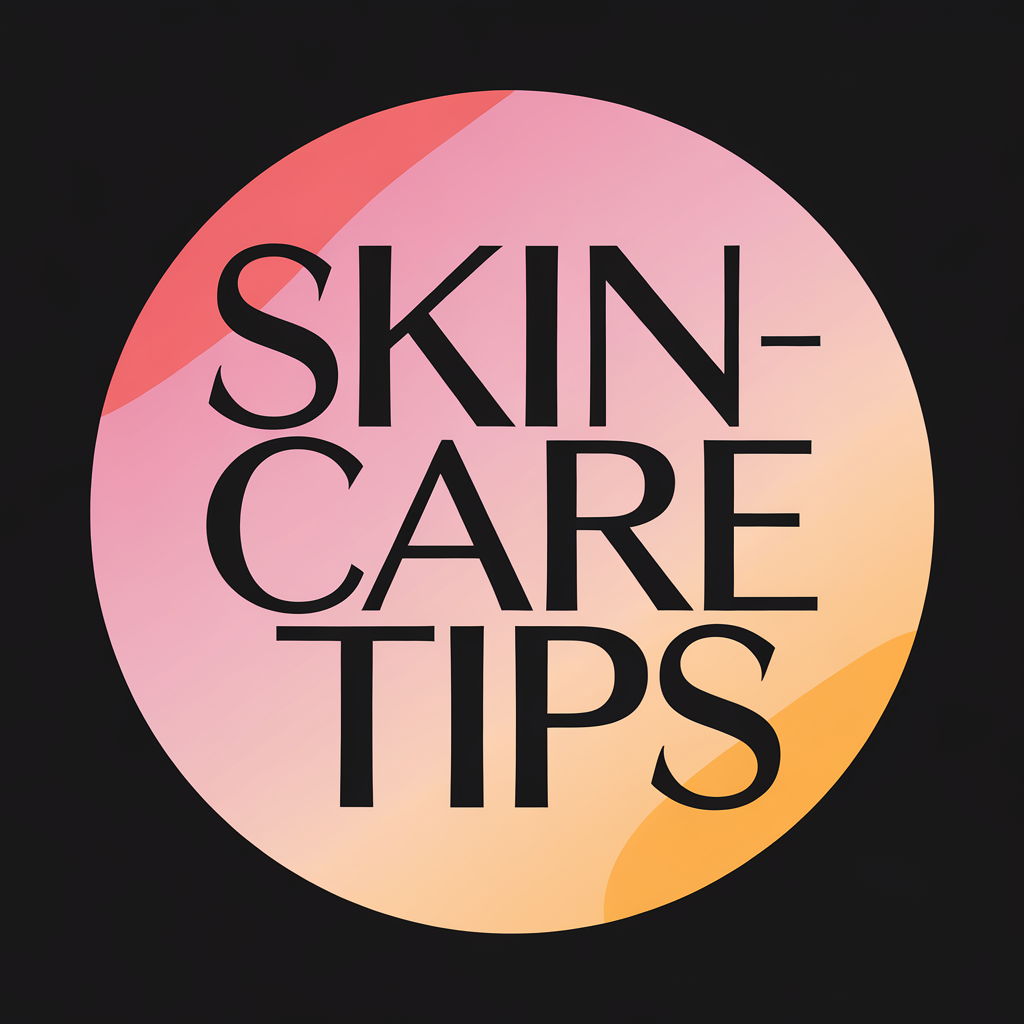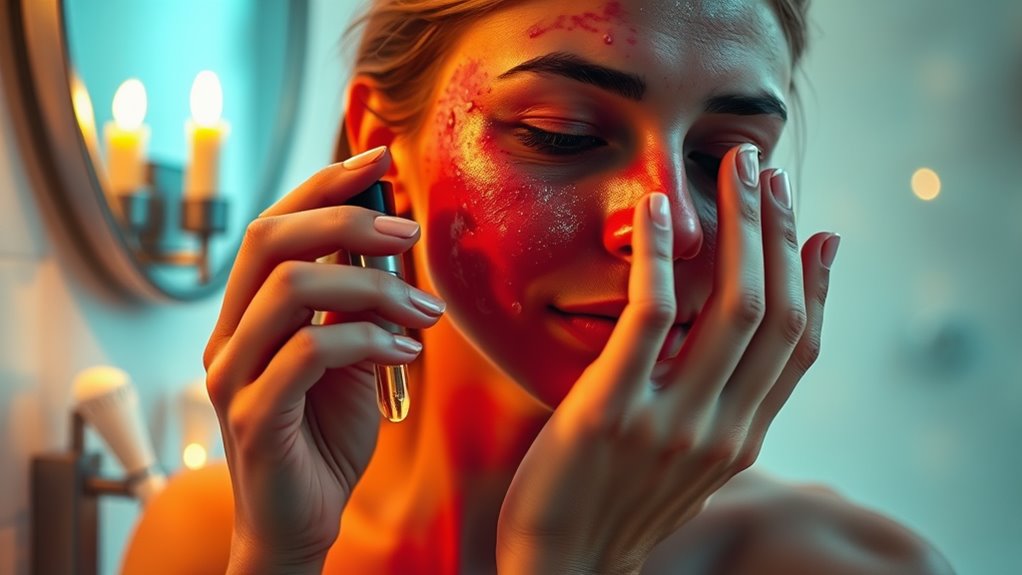Why Some Skincare Products Make Your Skin Worse Before It Gets Better
Some skincare products can make your skin worse before it gets better because they work to bring underlying impurities to the surface. This process, known as skin purging, can cause temporary breakouts as your skin adjusts. Ingredients like retinoids and AHAs often trigger this reaction. It’s essential to give your skin time to adapt, which can take several weeks. Stay tuned for tips on managing this adjustment period and promoting healthier skin recovery.
Understanding Skin Purging
When you start using new skincare products, especially those aimed at acne or exfoliation, you might notice your skin getting worse before it gets better. This phase, often called purging, is actually your skin’s way of reacting to the active ingredients.
Purging skincare helps bring underlying congestion to the surface, leading to breakouts in the short term. Don’t panic! This is usually a sign that the products are working to clear your skin. During this process, it’s crucial to stay patient and consistent. Remember, everyone’s skin is unique, and what works for your friends mightn’t be the same for you.
Embrace the journey, and give your skin time to adjust. If you share your experiences with others who understand what you’re going through, you’ll feel more supported. Understanding skin purging can help you differentiate between normal reactions and adverse effects. This community can really make a difference as you navigate the highs and lows of your skincare adventure!
Normal Purging vs. Adverse Reactions
Understanding the difference between normal skin purging and adverse reactions is vital as you navigate your skincare journey.
Purging happens when your skin clears out impurities, often presenting as breakouts or congestion. It usually occurs after starting a new product that speeds up cell turnover, typically lasting a few weeks. During this time, it can feel overwhelming, but remember, it’s a sign that the product is working—you’re not alone in this experience.
On the flip side, adverse reactions often appear as redness, itching, or excessive irritation. If you notice these symptoms, it may signal that the product isn’t right for your skin.
It’s crucial to listen to your skin and take action. If you suspect an adverse reaction, consider pausing or consulting with a professional. Additionally, be aware that certain habits, such as poor sun protection, can exacerbate skin issues and contribute to aging.
Embracing this distinction can help you stay connected to your skin’s needs while fostering a community that supports your journey to healthy, glowing skin.
Common Ingredients That Cause Purging
Certain skincare ingredients are known to trigger purging, especially when they accelerate cell turnover. If you’re diving into a new skincare routine, it’s important to know which ingredients might bring on that temporary breakout.
Retinoids are one of the top culprits; they work wonders but can push impurities to the surface. Alpha hydroxy acids (AHAs) and beta hydroxy acids (BHAs) are also common players, sloughing off dead skin to reveal a fresh layer but sometimes causing initial irritation.
You might also encounter growth factors or certain exfoliating enzymes which, while beneficial, can lead to purging. These ingredients are often included in products aimed at clearer, glowing skin, so don’t lose hope! Additionally, retinol’s effects can be intense during initial use, leading to a phase where your skin may appear worse before it improves.
Recognizing these triggers as part of your skin’s adjustment process can help you feel more secure in your journey. Remember, it’s a shared experience, and you’re not alone on the path to achieving that radiant complexion.
Timeline Expectations for Skin Improvement
As you embark on your skincare journey, it’s crucial to set realistic expectations for when you’ll see improvements. The timeline varies for everyone, but patience is key. Typically, you might start noticing changes in about four to six weeks if you’re using products consistently.
Initial reactions, like breakouts or dryness, can feel discouraging, but they’re often a sign of your skin adjusting. Don’t expect overnight miracles. Your skin’s healing process takes time, and real transformations generally show up at the three-month mark.
Some products, especially those with active ingredients, might even take up to six months before you fully appreciate their benefits. Remember, skincare is a commitment, not a sprint. Additionally, skipping your skincare routine, even briefly, can lead to dehydration and compromised barrier function, which underscores the importance of consistency in your regimen.
Surround yourself with supportive communities who understand these challenges—they can truly make a difference. Celebrate the small wins along the way, and cherish every step of this journey toward healthier skin!
The Science Behind Initial Breakouts
When starting a new skincare routine, it’s common to experience initial breakouts, which can feel frustrating. Understanding the science behind these reactions can help you feel more at ease. Your skin may be purging impurities, adjusting to active ingredients, or reacting to changes in its environment. Additionally, some hidden acne triggers, such as internal and external factors, can exacerbate these initial reactions.
| Cause | Response | Duration |
|---|---|---|
| Skin Purging | Breakouts | 1-2 weeks |
| Ingredient Adjustment | Increased Oil Production | 2-4 weeks |
| Toxin Release | Redness or Irritation | 1-3 weeks |
During this period, your skin undergoes essential changes that often lead to long-term benefits. It’s a normal part of the process, and knowing what’s happening beneath the surface can make the journey feel less isolating. Hang in there; you’re not alone in this!
Tips for Managing the Adjustment Period
While navigating the adjustment period of a new skincare routine, you can take several steps to ease your skin’s transition.
Remember, you’re not alone in this journey; many of us go through similar experiences. Here are some practical tips to help you along the way:
-
Be Patient: Understand that your skin needs time to adapt. It might be a few weeks before you notice any improvements.
-
Hydrate: Keep your skin moisturized to combat dryness or irritation. A good moisturizer can create a protective barrier.
-
Listen to Your Skin: Pay attention to how your skin reacts. If you experience discomfort, consider scaling back your routine temporarily. Consistency in your routine is crucial, as maintaining a regular routine yields better results than using products sporadically.
When to Stop Using a Product
How can you tell if a skincare product isn’t right for you? It’s essential to pay attention to your skin’s reactions. If you notice persistent redness, swelling, or irritation, it’s likely a sign that the product isn’t a good fit.
Also, if breakouts worsen rather than improve over time, don’t hesitate—it’s time to stop using that product. Trust your instincts; your skin deserves the best.
Consider also how your skin feels. If it feels excessively dry or tight, or if you develop rashes or peeling, these are clear indicators that you need to discontinue use.
Joining a community of skincare enthusiasts can help you navigate these experiences, as sharing stories can provide clarity and support.
Encouraging Healthy Skin Recovery
To encourage healthy skin recovery after discontinuing a problematic product, start by giving your skin a break and simplifying your routine. You deserve to feel refreshed and rejuvenated, so focus on nurturing your skin.
Here are three essential steps to help you on your journey:
-
Hydrate – Drink plenty of water and consider a gentle, hydrating moisturizer. Keeping your skin hydrated helps it heal faster.
-
Gentle Cleansing – Use a mild, fragrance-free cleanser to avoid irritating your skin further. Cleanse twice daily to remove impurities without stripping moisture.
-
Minimize Makeup – Limit the use of makeup to allow your skin to breathe. Instead, embrace your natural beauty while your skin adjusts.

